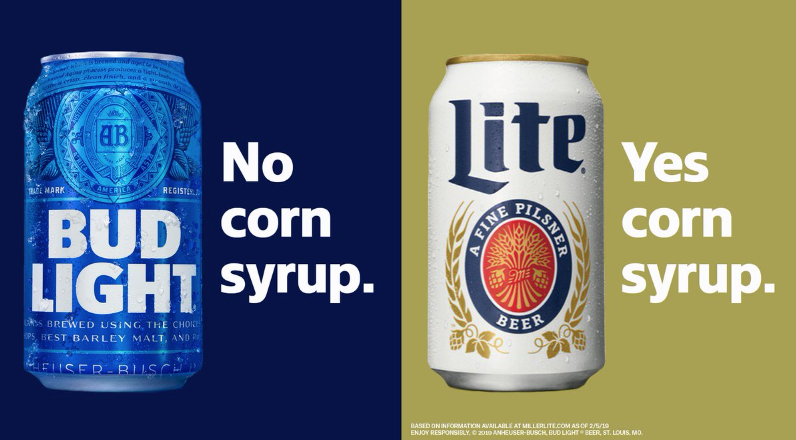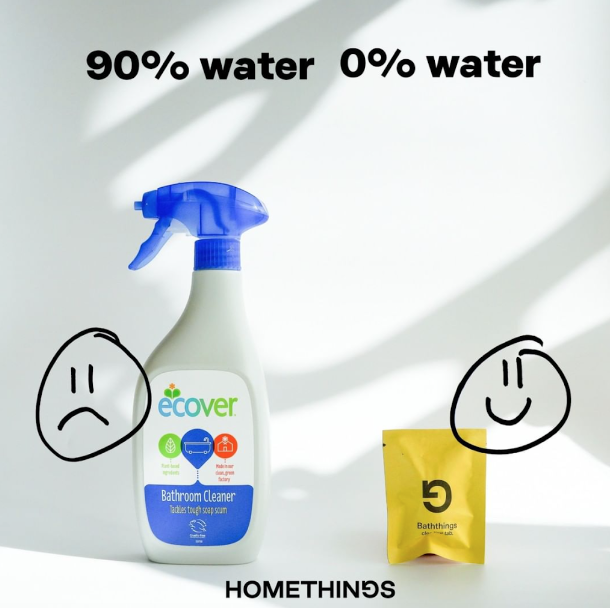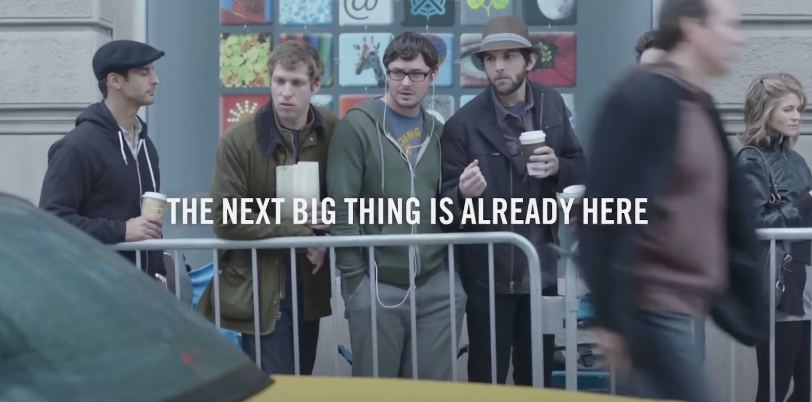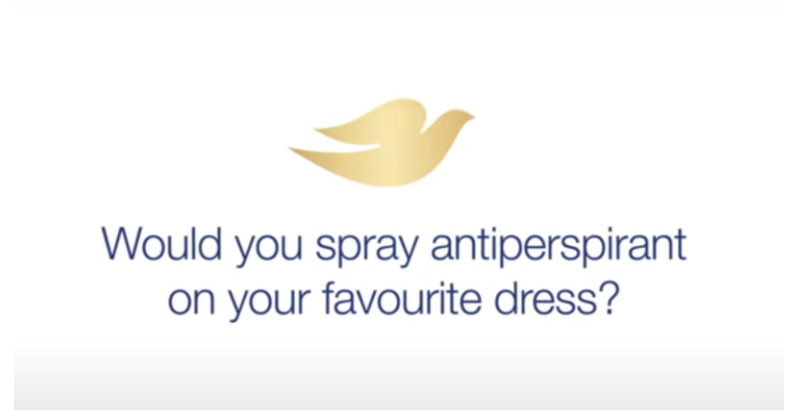
Competitive marketing campaigns: what makes this risky move work?
Competitive marketing can go down like a medicine with a spoonful of sugar. Or a lead balloon. We’ll examine a few examples of competitive campaigns and discuss the key elements that make them look good.
What is competitive marketing?
Another term for a competitive marketing campaign is ‘comparative advertising’. It involves comparing one brand competitively with another. Its goal is to paint the product advertised as superior. It’s a bold move which can attract a lot of attention to your brand.
Why is competitive marketing risky?
Competitive marketing is risky because, although it attracts a lot of attention, it could be good or bad. It depends on how the brand views publicity. Specifically, whether it considers any kind of publicity to be bad. Aside from legal issues, the brand could face the loss of customers. They also may appear desperate for attention.
When has competitive marketing been criticised?
Because of the risk element, there have been instances when brands have drawn negative publicity for their competitive ads.
Example 1: Bud Light’s anti-corn-syrup commercial (2019)

In 2019, Bud Light created a Super Bowl ad. Having aired it during a sporting event, you would think that overall viewers would appreciate the competitive element. But, the ad was poorly received.
Here is a transcription of the ad as it appears on Twitter:
Tweet: To be clear, Bud Light is not brewed with corn syrup, and Miller Lite and Coors Light are.
AD:
… and that’s how you brew it.
My king, this corn syrup was just delivered…
That’s not ours, we don’t brew Bud Light with corn syrup.
Miller Lite uses corn syrup.
Let us take it to them at once!
But if something did happen, we’d eat the wizard first, right?
Oh yes.
Oh brewers of Miller Lite, we received your corn syrup by mistake!
That’s not our corn syrup, we received our shipment this morning.
You’re joking.
Try the Coors Light castle. They also use corn syrup.
Can you smoke outside?
Oh brewers of Coors Light, is this corn syrup yours?
Well, well, well. Looks like the corn syrup has come home to be brewed. To be clear, we brew Coors Light with corn syrup.
Bud Light: brewed with no corn syrup.
The majority of the criticism came from their agricultural customers, many of whom renounced the brand as a result. Corn growers don’t take too kindly to their crops being demonised as unhealthy.
The ad is a bold move. Bud Light is directly criticising two competitor brands, for their own gain. They have leveraged the controversial ingredient, high-fructose corn syrup, to make their rice syrup appear healthier. Rice syrup hasn’t had the same level of negative press.
What’s wrong with the ad?
Let’s address the health element first. According to mayoclinic:
‘At this time, there’s insufficient evidence to say that high-fructose corn syrup is any less healthy than other types of sweeteners.
It is known, however, that too much added sugar of all kinds — not just high-fructose corn syrup — can contribute to unwanted calories that are linked to health problems, such as weight gain, type 2 diabetes, metabolic syndrome and high triglyceride levels. All of these boost your risk of heart disease.’
With this in mind, the campaign was construed as opportunistic. It didn’t stand up to scrutiny because there is weak evidence that some types of glucose are better for you than others. A competitive campaign needs to focus on a difference that’s more substantial.
As they’re targeting other ‘light’ lager brands, it may have been better to focus on the calorie count. Or to focus on rice syrup without bringing the other brands into it. Because they’re deliberately ambiguous, the mind naturally leaps to the negative press corn syrup has received. Instead, they could focus on how using rice makes the product taste great.
Whereas data on different syrups is contentious, it’s generally agreed that consuming a moderate amount of calories, particularly in drinks, contributes to overall health. Further, to claim any health benefits of alcohol is misleading.
Moving away from that, let’s have a look at the language they use in the ad. As if they hadn’t alienated many of their customers already, they actually use the term “corn syrup” 10 times in 1 minute, according to Readable’s keyword density tool. It is easier for your customers to understand what your product does have, rather than the absence of something. The viewer’s head will be full of the term ‘corn syrup’ without any understanding of why it’s necessarily bad, or why Bud Light is better. Ironic, since they use the refrain “to be clear”.
In addition to not using their important term ‘rice syrup’, the sentiment of the ad is negative, according to Readable’s tone and sentiment measures. The downfall of the competitive ads that don’t work tends to be that they use negative language. They spend so much time beating down the competition that they forget to make themselves look good.
In terms of the imagery of the ad, they have gone for the historical comedy route. This makes their health concerns look antiquated. Almost as if their apparent revulsion related to corn syrup is superstitious and old-world.
Example 2: Homethings’ competitive Instagram ad (2021)

A lesser-known example is an ad spotted on Instagram in 2021 by the eco brand Homethings.
The ad compares a well-known eco cleaning product to their alternative, which is supplied as dry tabs.
This is the content of the Instagram caption:
Homethings: the eco cleaning you love, but better.
💦 No more shipping water around the world
♻️ No single-use plastic, vegan + cruelty free
⭐️ No need to panic, trust hundreds of 5* reviews
The great thing about ads on social media is that you can immediately see what the reception is from viewers. Although many of the comments have been deleted, a cursory glance tells you most people didn’t like this competitive approach.
What’s wrong with the ad?
As you can see, the copywriter has repeatedly used the word ‘no’ in their bullet points in the caption detailing the benefits. The phrase ‘no need to panic’ is also suspect. It introduces the idea that the viewer would be panicking upon seeing their advert. There’s no need to plant that idea; it likely wasn’t there in the first place.
Our sentiment score also picked up that the caption was ‘neutral’, and it would have been better for them to communicate in the positive.
As for the elephant in the room, they have directly put Ecover in a negative light. It makes a negative impression. Eco brands naturally want to compete with other eco brands. But, they should focus their criticism on cleaning products with a poor environmental record.
In terms of the visual elements of the ad, the crudely drawn happy and sad faces could be construed as unprofessional.
To improve the ad, they could have used a generic ‘competitor’ bottle rather than singling out a specific brand. They could also have focused on the benefit of their product using positive language. Similarly to the Bud Light ad, they could have focused less on what the product doesn’t contain.
Here are some examples of how they could turn this around to the positive:
- Free from plastic
- Eco friendly materials
- X% positive impact on the environment
If they do focus on the fact it’s 0% water, they should give us context on why that’s a good thing. Tell us about the environmental impact of water shipping.
The viewer has obviously been targeted because they’re interested in zero waste products, but they may use Ecover for this reason. Because the Ecover brand is environmental, they may feel morally connected to it. Therefore, they may take offence.
It’s natural for a smaller brand to want to increase their market share. But, a competitive campaign is a risky move even for the big brands. They can take the possible legal hit, but smaller brands should be careful. If they choose to take the risk, they should do so in a positive way to give consumers a lasting positive impression.
When does competitive marketing work?
Now that we’ve covered what elements of a competitive campaign are unsuccessful, we can practice what we preach and focus on the positive.
Example 1: Samsung Galaxy SII commercial (2011)

A decade ago Apple was seen as ahead of the curve compared with Android phones, in terms of features and product design. Android phones have come a really long way in that time. Apple and Android are now neck and neck.
New Apple releases are still seen as an event, but they were even more so at the time this advert was released. Here is a transcription of the ad:
Guys, I’m so amped, I could stay here for 3 weeks.
9 hours down, and we’re almost in the door.
I think 2 people just left!
Why would they be leaving when we’re only 9 hours away?
Yeah, I mean, this is an event.
Uhhh… blogs are saying the battery looks sketchy.
If it looks the same, how will people know I upgraded?
Does it support 4G? It doesn’t say. It doesn’t say!
Whoa. What’s she got there?
Not sure…
What is that?
Guys. Whoa, whoa whoa. Can we see your phone?
Sure.
Can I see it with my hands?
Have you seen this thing?
Check out the screen, this thing is huge.
It’s pretty massive.
And it’s got 4G speed.
It’s magnificent.
It’s a Samsung.
Samsung?
That’s a Samsung.
Yeah.
I could never get a Samsung. I’m creative.
Dude, you’re a barista.
Why don’t you guys just get 4G phones?
Why don’t you just get 4G phones?
Yeah, it’s a Galaxy SII.
This phone… is amazing.
The next big thing is already here.
The Galaxy SII. From Samsung.
This article doesn’t explore whether Samsung or Apple make better products – phone users have different priorities and they like what they like. But, this is a magnificent piece of copy.
What’s right with the ad?
The comparison is obvious, but they have made it tasteful. The opening gives the viewer a sense of excitement about an event because it’s not yet clear what the customers are queueing up for. Then we hear how long they’ve been waiting in line which moves it into parody territory. The Apple brand is never shown, the Apple Store never revealed. But, from the context, and the common complaints about battery life, we connect the dots.
But, they keep the features of the new Apple phone inconclusive. Cleverly avoiding slandering the competition.
Their satire is aimed at Apple users. None of this satire is offensive or alienating. At the end, they show the users are open to change.
They also make a switch to the positive. Instead of focusing too much on what the sought-after phone doesn’t have, they clearly list the benefits of the Samsung model:
- The screen is huge.
- It’s got 4G speed.
They use a stream of positive words to describe the product: ‘massive’, ‘magnificent’, ‘amazing’. According to our keyword density tool, they mentioned ‘Samsung’ 5 times in the minute-long commercial, creating a distinct buzz around the product.
The tagline they use at the end is also very clever. ‘The next big thing is already here’. It tells the viewer, why wait? It places Samsung firmly in the present; it’s cutting-edge and, thanks to their tech, the future has already arrived.
Example 2: Dove’s anti-white marks commercial (2018)

This deodorant commercial is an example of where using a negative can be successful. Here’s the transcript:
Would you spray antiperspirant on your favourite dress?
(No.)
These women tried it…
… and they couldn’t believe their eyes.
(Wow!)
New Dove is proven to be invisible on all the colours of the rainbow.
Dove Invisible: proven to leave no white marks on a hundred colours.
What’s right with the ad?
They start by harnessing the fear of spraying antiperspirants on clothes. They’re targeting a typical product flaw, without using competitor names. By showing that the women they surveyed for their demonstration were shocked, they make the product seem innovative.
Visually and aurally the commercial has a positive feel, even though they’re focusing on negating white marks. Further, by repeating the word ‘proven’ they give the Dove brand a sense of reliability above their competitors. The sentiment of the transcript is neutral, showing that they are focusing on making it appear as objective as possible, despite their obvious bias.
What can we learn from the pros and cons?
From the examples above, you can see that:
- Positivity is essential. Don’t just criticise the competition.
- Be in competition with yourself. Have high standards for your own product – this will always be good for business.
- Be careful about naming your competition directly.
- It’s important to be transparent.
- Identify the clear points of distinction in your product. Articulate the benefits to your customer.
- Always keep your audience in mind as well as your competitors.
- Harness repetition to focus your copy.

